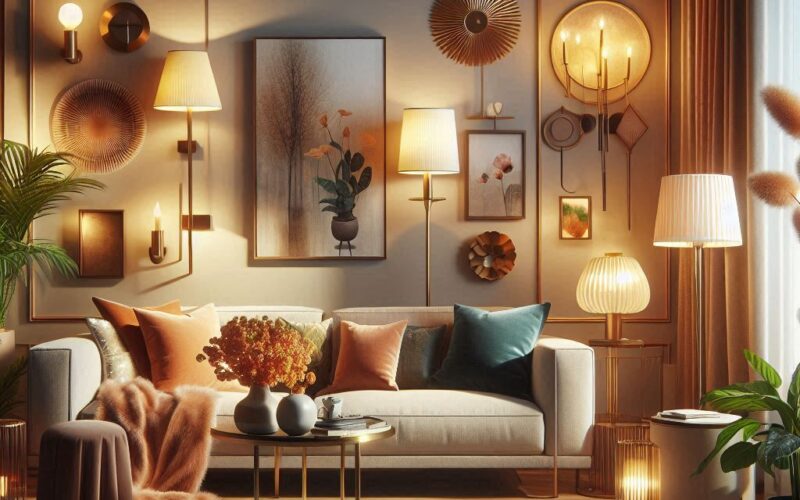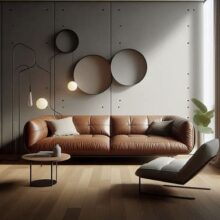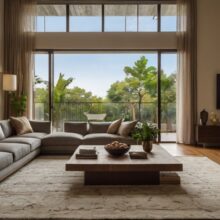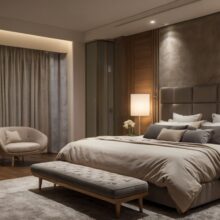Choosing the Right Lighting for Your Home

Choosing the Right Lighting for Your Home
Many do not appreciate how much the right lighting can transform your mundane, ordinary home into an inspiring, extraordinary sanctuary? Lighting is one of the most powerful tools in interior design, influencing not only the aesthetics of a space but also its functionality and mood. In this article, we’ll explore the types of lighting, design principles, and practical tips to help you create the perfect lighting scheme for your home. By the end, you’ll be ready to illuminate your space with confidence.
Understanding the Basics of Home Lighting
Lighting can be broadly categorized into three types: ambient, task, and accent. Each type serves a unique purpose and, when used together, creates a balanced and functional space.
Ambient Lighting
Ambient lighting provides overall illumination, setting the tone for a room. Examples include ceiling lights, chandeliers, and wall sconces. For instance, a dimmable chandelier in a dining room can create a warm and inviting atmosphere for dinner parties.
Task Lighting
Task lighting is focused and functional, designed to assist with specific activities like reading, cooking, or working. Desk lamps, under-cabinet lights, and pendant lights are common examples. A well-placed desk lamp can reduce eye strain and improve productivity in a home office.
Accent Lighting
Accent lighting highlights architectural features, artwork, or decor. Track lighting, wall washers, and picture lights fall into this category. For example, a picture light above a painting can draw attention to it and add depth to the room.
Design Principles for Effective Lighting
Layering light is key to creating a dynamic and functional space. This involves combining ambient, task, and accent lighting to achieve balance and interest. Color temperature also plays a crucial role—warm light (2700K-3000K) creates a cozy atmosphere, while cool light (4000K-5000K) is energizing and ideal for task-oriented areas.
Using Lighting to Highlight Features
Lighting can be used to emphasize architectural details or decor. For instance, recessed lighting can highlight a textured wall, while a spotlight can draw attention to a sculpture.
Room-by-Room Lighting Guide
Living Room: Combine ambient lighting (e.g., a ceiling fixture) with accent lighting (e.g., floor lamps) to create a cozy and inviting space. Dimmer switches allow you to adjust the mood based on the occasion.
Bedroom: Opt for warm, soft lighting to promote relaxation. Bedside lamps with adjustable brightness are ideal for reading, while a central ceiling light provides general illumination.
Kitchen: Bright task lighting is essential for food preparation. Under-cabinet lights and pendant lights over the island are practical choices. Ambient lighting can be achieved with recessed ceiling lights.
Bathroom: Use bright, cool lighting around the mirror for grooming tasks. A central ceiling light or wall sconces can provide ambient lighting.
Home Office: Focus on task lighting to reduce eye strain. A desk lamp with adjustable brightness and color temperature is ideal. Ambient lighting can be provided by a ceiling fixture or floor lamp.
Trends and Innovations in Home Lighting
Smart lighting is revolutionizing home design, allowing you to control lights via voice commands or smartphone apps. For example, Philips Hue offers customizable color options and scheduling features. Sustainable lighting options, such as LED bulbs, are also gaining popularity due to their energy efficiency and long lifespan.
Circadian Rhythm Lighting
This innovative approach mimics natural light patterns to support your body’s internal clock. For instance, lights can be programmed to emit cool, bright light in the morning and warm, dim light in the evening.
Common Mistakes and How to Avoid Them
One common mistake is relying solely on a single light source, which can create harsh shadows and an unbalanced look. To avoid this, layer different types of lighting. Another mistake is ignoring dimmer switches, which offer flexibility and control over the ambiance.
Mismatched Color Temperatures
Using lights with different color temperatures in the same room can create visual discord. Stick to a consistent color temperature for a cohesive look.
Conclusion
Lighting is a powerful tool that can transform your home into a warm, cozy and aesthetically pleasing space. By understanding the basics, following design principles, and avoiding common mistakes, you can create the perfect lighting scheme for every room. Now that you are enlightened, let’s start by experimenting with different light sources and share your journey in the comments below!



